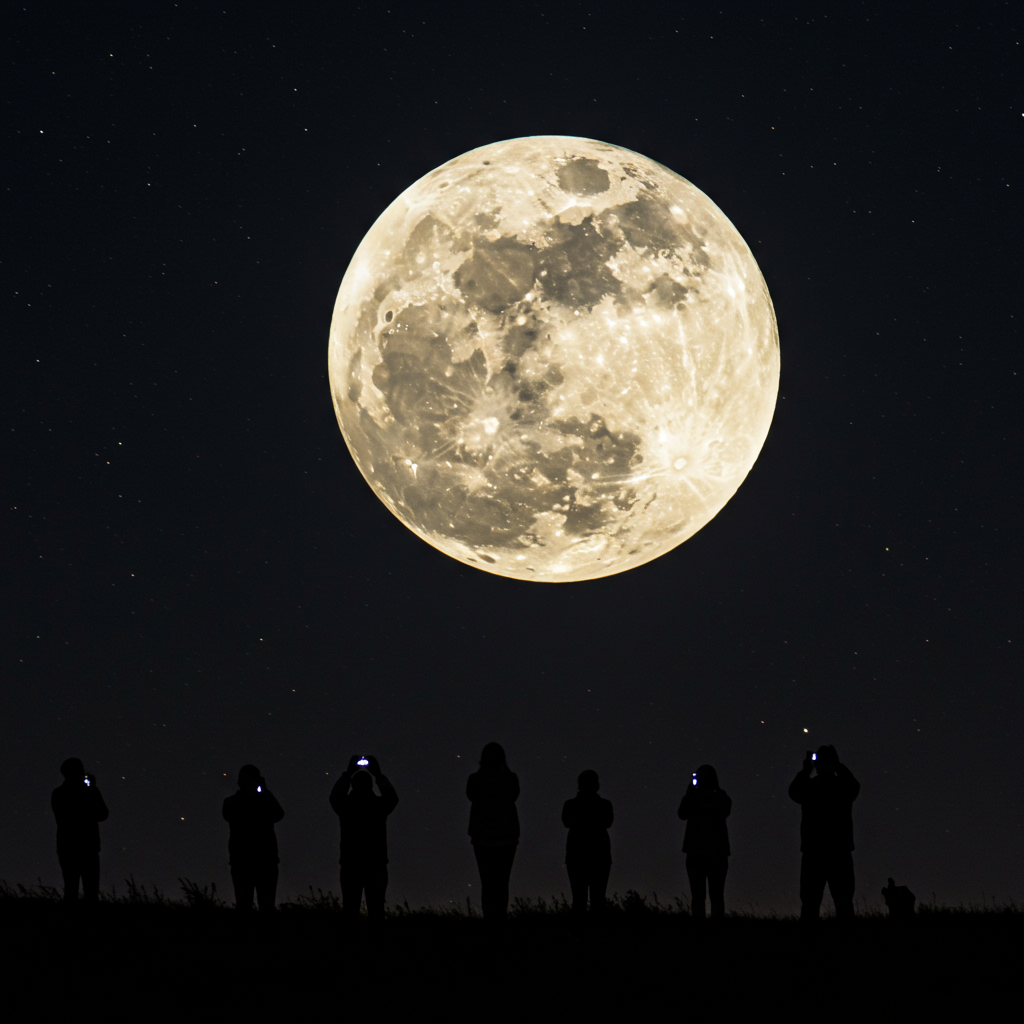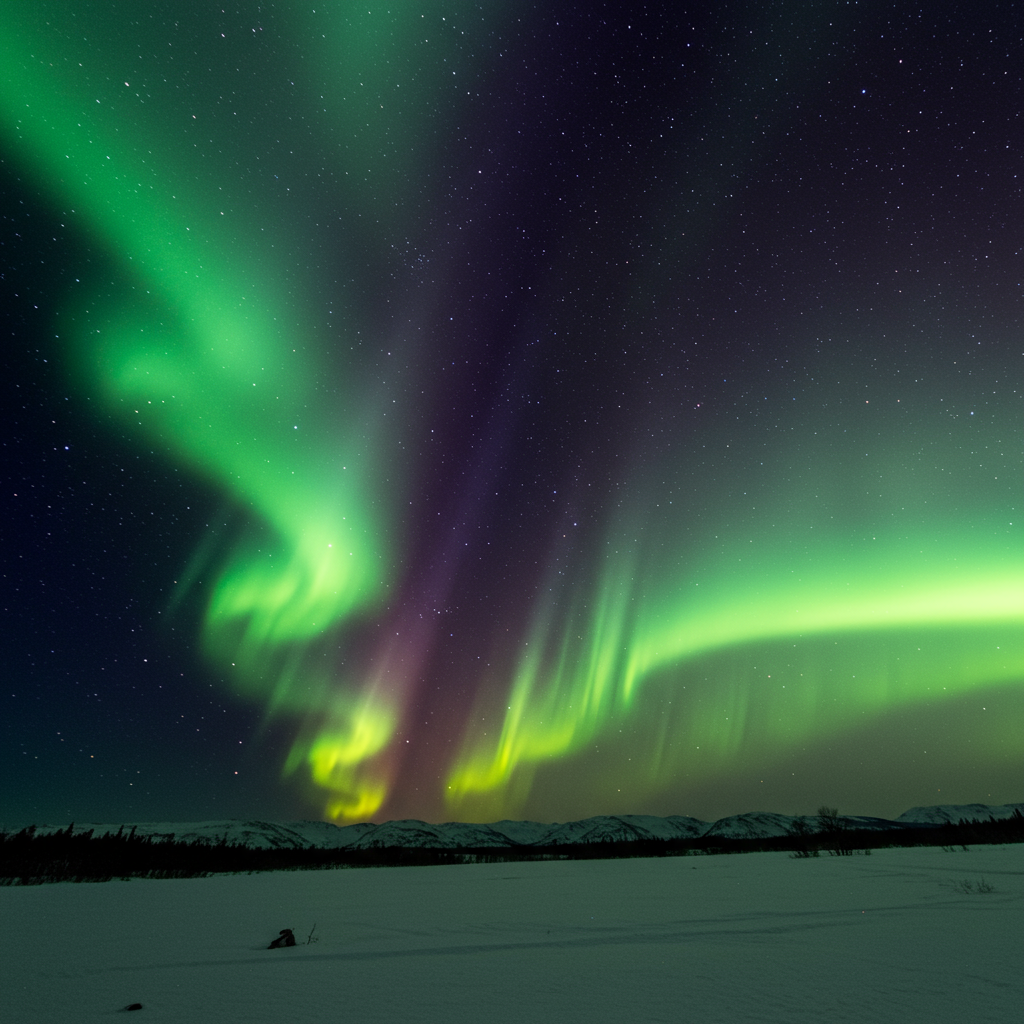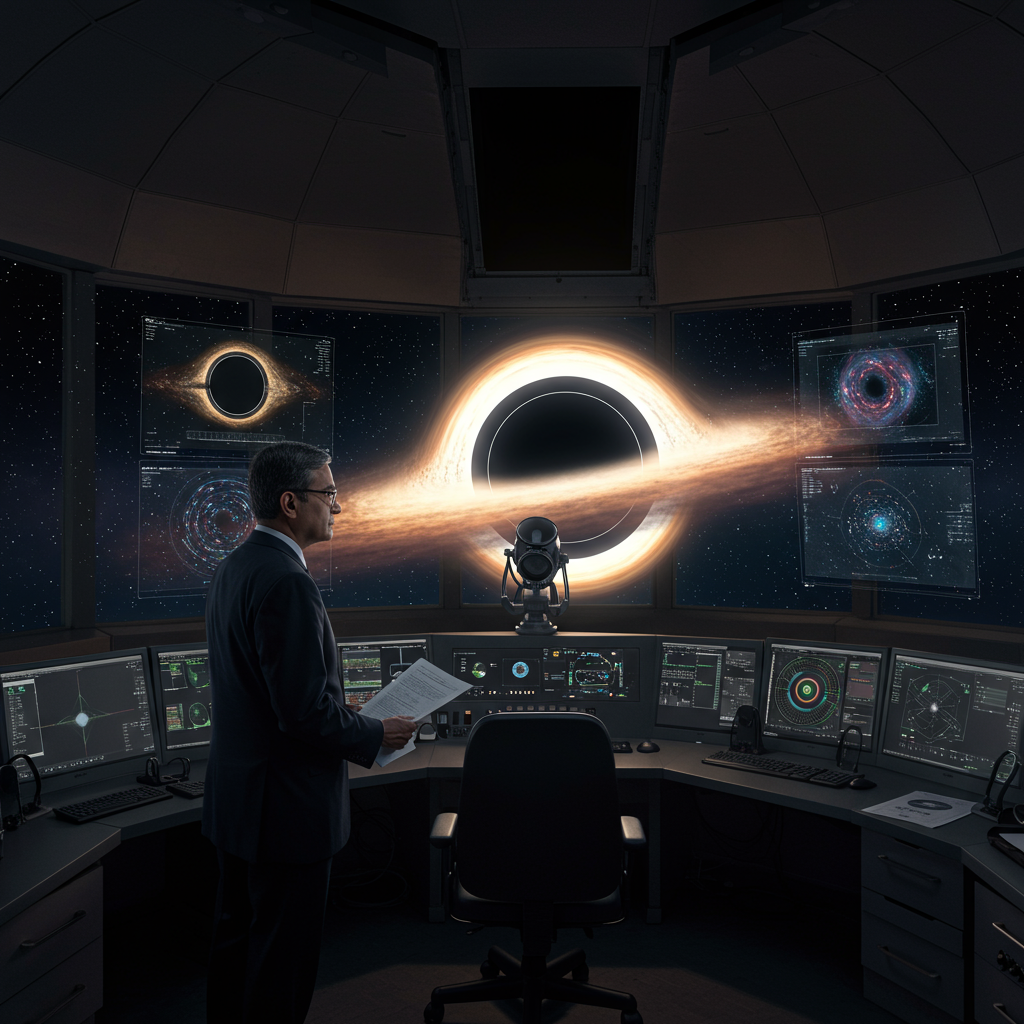Prepare for a spectacular celestial show as the final months of 2025 usher in an extraordinary sequence of supermoons, continuing into early 2026. This rare streak of back-to-back supermoons offers skywatchers an unparalleled opportunity to witness our lunar companion appearing larger and brighter than usual in the night sky. From traditional names like the Harvest Moon and Beaver Moon to expert viewing tips and photography advice, this guide provides everything you need to fully experience this breathtaking astronomical event. Get ready to look up and connect with the wonders orbiting just above our heads.
Decoding the “Supermoon”: What Makes it So Special?
A “supermoon” is a popular term for a full moon that coincides with perigee – the point in the Moon’s elliptical orbit where it is closest to Earth. Far from a perfect circle, the Moon’s path around our planet is more egg-shaped, meaning its distance from Earth constantly varies. At perigee, the Moon can be as close as 356,000 kilometers (approximately 221,000 miles), while at its farthest point, known as apogee, it can retreat to over 406,000 kilometers (around 252,000 miles).
When a full moon aligns with perigee, the result is a visibly enhanced lunar disk. While the Moon’s physical size remains constant, its apparent size from Earth increases significantly. Compared to a full moon at apogee, a supermoon can appear up to 14 percent larger and shine as much as 30 percent brighter. Against an average full moon, the difference is closer to 7 percent larger and 15 percent brighter. Although these changes might seem subtle to the naked eye, side-by-side photographs vividly capture the striking difference, revealing why this phenomenon generates such excitement among astronomers and casual observers alike. Scientifically, this alignment is known as “perigee syzygy,” highlighting the precise orbital mechanics at play.
The Unmissable 2025-2026 Supermoon Streak
While individual supermoons occur several times a year, the upcoming rare supermoon streak 2025, extending into January 2026, is truly exceptional. For three consecutive months this fall, every full moon will be a supermoon, with an additional supermoon following in early 2026. This impressive run is a rare alignment that doesn’t happen often, making it a must-see event for skywatchers.
Mark your calendars for these peak viewing dates:
October 6, 2025: The Harvest Supermoon
November 5, 2025: The Beaver Supermoon
December 4, 2025: The Cold Supermoon
January 3, 2026: The first supermoon of the new year, extending the streak to four!
This unusual sequence occurs because the timing of perigee slowly drifts relative to the lunar phases, completing a full cycle approximately every 14 lunar months (about 411 days). Sometimes, this cycle aligns perfectly for only one supermoon, but in other instances, like 2025-2026, the conditions are just right to produce a string of multiple consecutive events. The last similar streak in 2024 also featured four consecutive supermoons, with October’s Hunter’s Moon being the largest and closest of that year’s series.
Journey Through Lunar Names: Harvest, Beaver, and Cold Moons
For centuries, cultures across the globe have given distinct names to each full moon, reflecting seasonal changes, agricultural cycles, and traditional activities. These evocative names, many preserved through sources like the Farmer’s Almanac and drawing from both European and Indigenous practices, add a rich layer of cultural heritage to our celestial observations.
October 6, 2025: The Harvest Supermoon
The October full moon is known as the Harvest Moon, a name deeply rooted in the agricultural traditions of the Northern Hemisphere. This moon is specifically designated as the full moon closest to the autumnal equinox, which usually occurs in September but falls in October roughly every three years, as it does in 2025. Before the advent of electricity, its extended light just after sunset provided crucial extra hours for farmers to gather their crops late into the evening, maximizing their yield before winter set in. It’s a beacon of productivity and gratitude for the season’s bounty.
November 5, 2025: The Beaver Supermoon
November’s full moon is traditionally called the Beaver Moon. This name originates from Native American communities, who noted this as the time when beavers were busily preparing for winter by building their dams and repairing lodges. It also historically marked the season when trappers would set out to harvest beaver pelts before rivers froze solid. The Beaver Moon thus connects the natural world’s rhythms with human industry and survival strategies as temperatures begin to drop.
December 4, 2025: The Cold Supermoon
The Cold Moon signals the arrival of the deepest winter across the Northern Hemisphere. Rising during the holiday season, this December full moon is named for the truly frigid temperatures and long, dark nights that characterize this time of year. It stands as a symbolic beacon against the year’s darkest days, offering a touch of ethereal beauty amidst the stark winter landscape.
Optimizing Your Skywatching Experience
To truly appreciate the rare supermoon streak 2025, thoughtful planning can enhance your experience. No special equipment is strictly required; your own eyes are often the best tool for appreciating the panoramic grandeur of the night sky, especially for phenomena like full moons and constellations. However, a few tips can elevate your view.
When and Where to Look
The most dramatic views of a supermoon often occur at moonrise. As the golden lunar disk climbs above the eastern horizon just after sunset, it can appear remarkably enormous. This striking effect isn’t solely due to the Moon being at perigee; it’s also amplified by the “moon illusion,” a fascinating quirk of human perception that makes celestial objects seem larger when they are close to the horizon and framed by terrestrial landmarks. To maximize this visual impact, find a location with a clear view of the eastern horizon, perhaps with trees, buildings, or mountains in the foreground to create a sense of scale.
Essential Gear for Stargazers
While the naked eye provides a stunning vista, simple tools can reveal more intricate details:
Binoculars: An excellent first instrument for skywatching, binoculars are easy to use, versatile, portable, and affordable. NASA recommends them for sharpening lunar features like craters, mountain ranges, and the dark “seas” of solidified lava. A tripod mount can significantly improve stability and viewing comfort.
Telescopes: For those seeking a deeper dive, even a modest backyard telescope can unveil the rugged beauty of the Moon’s surface in striking detail, offering magnified views of its geological features.
Dark Sky Locations: To truly appreciate the Moon’s brilliance and potentially catch fainter celestial objects, escaping urban light pollution is key. Seek out designated International Dark Sky Parks or simply venture outside city limits.
Capturing the Celestial Spectacle: Supermoon Photography Tips
For those hoping to immortalize the supermoon on camera, timing and composition are paramount for a stunning shot.
Timing is Everything: Plan your shoot just as the moon rises or sets. This is when its golden disk hovers close to landmarks on the horizon, creating the most dramatic and photogenic scenes.
Equipment Choices:
DSLR Cameras: For the classic “supermoon over the city skyline” effect, where the moon appears large against a foreground object, a DSLR camera with a telephoto lens (200mm or more) is ideal. This setup allows you to zoom in and compress the perspective, making the moon appear much larger relative to foreground elements.
Smartphones: Many modern smartphones, especially those with wide-angle lenses, can capture impressive shots of the moon rising over expansive landscapes, bathed in dramatic twilight hues. Consider using a tripod for stability and experimenting with long exposure settings to gather more light.
Composition Matters: Frame the moon with interesting foreground elements – a distant tree, a mountain range, or a city silhouette – to create a compelling and dynamic image.
Beyond the Visual: Subtle Supermoon Effects
While the visual spectacle is the primary draw, supermoons also exert a subtle, yet measurable, gravitational influence on Earth. Due to the Moon’s closer proximity, high tides during a supermoon can feel a slight boost, rising a few centimeters higher than normal. This effect is usually minor and often goes unnoticed, but it’s a testament to the Moon’s constant interaction with our planet.
Despite sensational claims often circulating online, there is absolutely no scientific evidence linking supermoons to catastrophic events like earthquakes, volcanic eruptions, or other natural disasters. The gravitational forces involved, while slightly stronger, are not significant enough to trigger such large-scale geological shifts. For moon gazers, the only genuine “hazard” is missing the breathtaking view due to unfavorable cloud cover.
Other Celestial Treats in October 2025
October 2025 isn’t just about the Harvest Supermoon; it also offers opportunities to witness other exciting night sky events. The month features two meteor showers, though their visibility will be influenced by the bright supermoon.
Draconid Meteor Shower (October 6-10, 2025): Active during the same period as the Harvest Supermoon, the Draconids are remnants from comet 21P Giacobini-Zinner. You’d typically look towards the constellation Draco in the northern sky. However, the bright supermoon will likely make viewing these meteors challenging, as they produce fewer meteors per hour (up to 10 under ideal conditions).
Orionid Meteor Shower (Peaks October 21, 2025): A more promising display, the Orionids are active from late September through late November and peak around October 21. These meteors originate from debris shed by Halley’s Comet, capable of producing up to 20 meteors per hour. The best viewing window for the Orionids will be from before midnight on October 21 until approximately 2 AM, as the supermoon’s intense brightness will have diminished by then, offering better viewing conditions. To spot them, look for meteors appearing to radiate from the constellation Orion.
These additional events further enrich the skywatching experience, reminding us that the cosmos is a dynamic and ever-changing canvas.
NASA’s Perspective: Connecting to the Cosmos
NASA consistently emphasizes that skywatching is an accessible activity for everyone, serving as a powerful gateway to understanding our place in the universe. Through initiatives like “What’s Up” video series and the Night Sky Network, NASA provides comprehensive resources to connect the public with upcoming celestial events. Their scientific missions, from space telescopes to planetary probes, extend human senses deep into space, bringing distant wonders closer and contributing to a shared understanding of our planet’s place among the stars. The ability to witness a rare supermoon streak is a prime example of this connection, fostering a personal engagement with the ongoing quest for cosmic understanding.
Frequently Asked Questions
What makes supermoon streaks like the 2025-2026 event rare?
Individual supermoons happen a few times each year, but a streak of three or four consecutive supermoons is considered rare. This unusual alignment occurs because the Moon’s elliptical orbit means its closest point to Earth (perigee) slowly shifts relative to its full phases. This cycle takes about 14 lunar months to complete. In some years, like 2025-2026, the timing aligns perfectly to produce multiple full moons near perigee in a row, offering an extended period of brighter, larger lunar displays that skywatchers rarely get to see consecutively.
What’s the best way to view and photograph the 2025 supermoons?
For optimal viewing, step outside after sunset and look towards the eastern horizon on the supermoon dates (October 6, November 5, December 4, 2025, and January 3, 2026). The moon appears most dramatic when it’s low on the horizon, thanks to the “moon illusion.” Binoculars are an excellent tool to sharpen lunar features like craters. For photography, use a DSLR with a telephoto lens (200mm+) to capture the moon large against horizon landmarks, or a smartphone with a wide-angle lens for scenic landscape shots during moonrise.
Should I worry about supermoons causing natural disasters?
No, there is no scientific evidence to support claims that supermoons cause natural disasters like earthquakes or volcanic eruptions. While the Moon’s closer proximity during a supermoon does result in slightly higher tides—a difference of only a few centimeters—this gravitational effect is far too minor to trigger significant geological events. Sensational reports linking supermoons to disasters are not backed by scientific data. The only “hazard” for skywatchers is missing the view due to clouds.
Embrace the Lunar Spectacle
The rare supermoon streak 2025 is an invitation to pause, look skyward, and connect with the extraordinary dance of our solar system. From the ancient names that echo human history to the precise orbital mechanics that create its glow, each supermoon offers a unique perspective on our place in the cosmos. Whether you’re a seasoned astronomer or a casual observer, arm yourself with this guide, step outside, and prepare to be enchanted by the moon’s amplified presence. The wonder it inspires, even if the physical difference is subtle, is always super.




